Behavioral Science I Lesson 12: Mental Disorders Part II
1/31
There's no tags or description
Looks like no tags are added yet.
Name | Mastery | Learn | Test | Matching | Spaced |
|---|
No study sessions yet.
32 Terms
Formerly called Multiple Personality Disorder, this mental disorder is characterized by a person having multiple distinct personalities that will act in different mannerisms, including different emotional responses and denial of the other personalities.
(A) Somatic symptom disorder
(B) Dissociative Identity Disorder
(C) Schizophrenia
(D) Bipolar Disorder
(B) Dissociative Identity Disorder is characterized by having multiple distinct personalities.

True or False? Because the different personalities in Dissociative Identity Disorder come from the same body, there are no "physical" changes.
False. Although the different personalities in Dissociative Identity Disorder come from the same body, there can be physical changes, including the dominant hand.
Which of the following is the least likely way that someone could develop Dissociative Identity Disorder (DID)?
(A) Janelle's mom suffered from DID, and Janelle slowly became paranoid she would develop DID until the point where she did.
(B) After spending grueling months studying for the LSAT and finally getting an offer to practice, the lawyer is thrust into a high-profile case right away as a "trial" before he is offered a contract.
(C) As a child, Charlie was frequently abused by his stepdad.
(D) Mike feels mistreated by all those around him.
(A) Janelle's mom suffered from DID, and Janelle slowly became paranoid she would develop DID until the point where she did.
DID is known to be caused by extreme stress, with a significant portion of those being child abuse-related. Being paranoid about familial health is least likely to cause that level of stress.
True or False? Dissociative Identity Disorder is a very rare mental disorder, and is only commonly known because of media representations.
True. Dissociative Identity Disorder is a very rare mental disorder, and is only commonly known because of media representations.
Which of the following is not a cause of controversy regarding Dissociative Identity Disorder?
(A) The media have taken an undocumented disorder, DID, and propagated it to the point where even the DSM has to address it.
(B) Therapists may support the line of thinking that can lead to DID, causing some occurrences accidentally.
(C) As rare as DID is in the USA, it is rare almost to the point of not existing elsewhere, making DID appear like a social construct.
(D) People play different roles in different situations, so this could just be an extreme case brought on by stress.
(A) The media have taken an undocumented disorder, DID, and propagated it to the point where even the DSM has to address it.
There are real, documented cases of Dissociative Identity Disorder. Options (B), (C), and (D) are all real controversies regarding DID.
CRB Another dissociative disorder is Dissociative Amnesia. How many episodes must a patient have of suddenly forgetting important personal information before the patient is diagnosed with this disorder?
(A) 0, but have shown warning signs
(B) 1
(C) 2
(D) At least 3
(B) 1
If a patient ever has had an episode where they forgot important personal information , usually related to severe stress, then they could be diagnosed with Dissociative Amnesia.
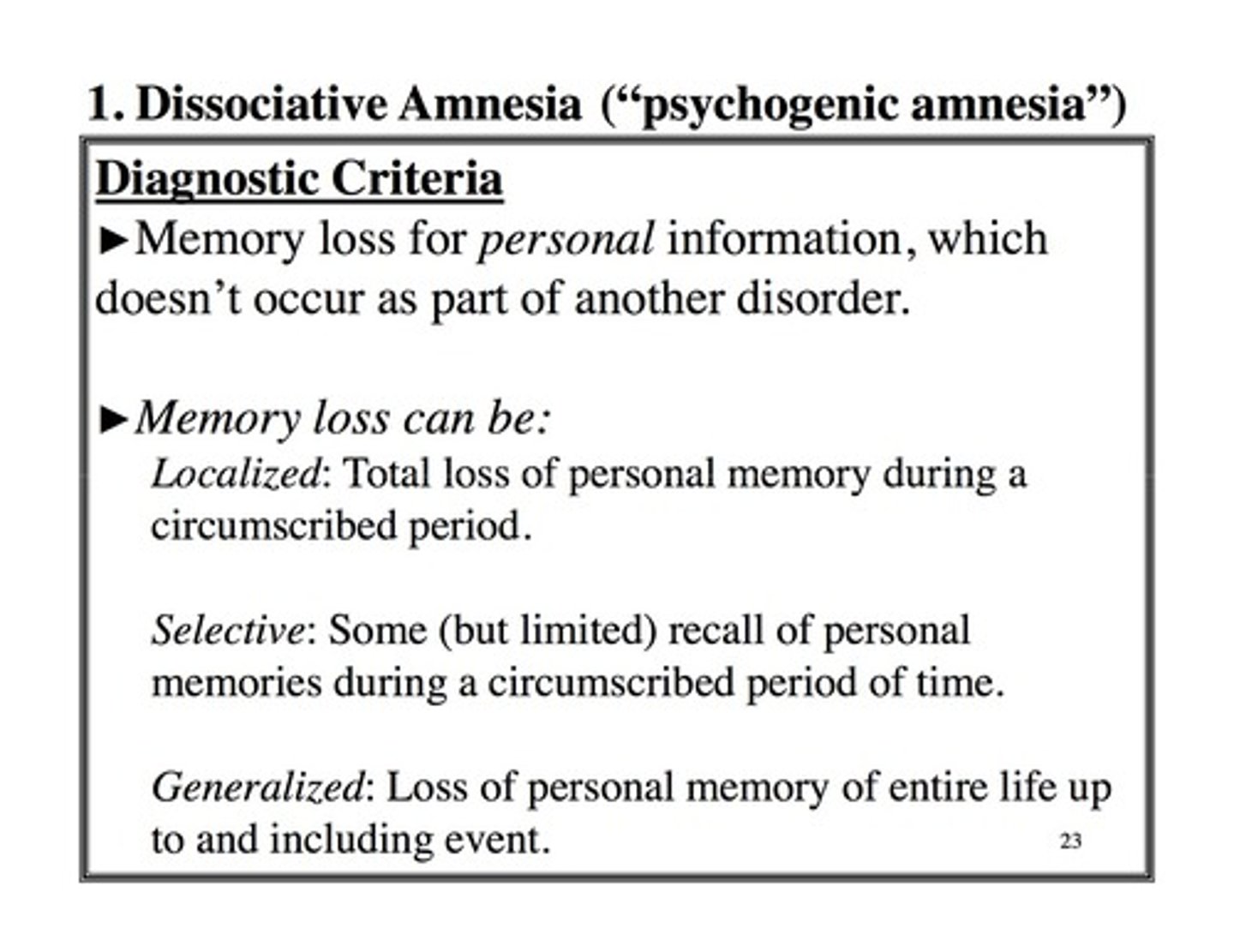
CRB Some Dissociative Amnesia patients also suffer from Dissociative Fugue, where a person will go on a sudden journey. Which of the following descriptions about Dissociative Fugue are true?
I. An episode can last anywhere from a few hours to months, and will end gradually.
II. During an episode, a patient may be disoriented, confused, and potentially violent.
III. When an episode ends, the patient remembers both their previous information and the episode.
(A) II only
(B) I and II only
(C) II and III only
(D) I, II and III
(A) II only
The following are all correct descriptions about Dissociative Fugue:
I. An episode can last anywhere from a few hours to months, and will end Suddenly.
II. During an episode, a patient may be disoriented, confused, and potentially violent.
III. When an episode ends, the patient remembers their previous information, but does not remember the episode.
CRB Compare Depersonalization Disorder and Derealization disorder, focusing on what the individuals feel detached from.
Both Depersonalization and Derealization are dissociative disorders. In Depersonalization, the patient feels detached from their own mind and body. For Derealization, the patient feels detached from their surroundings.
True or False? Similar to how medical conditions can lead to psychological symptoms, mental disorders can lead to physical symptoms.
True. Similar to how medical conditions can lead to psychological symptoms, mental disorders can lead to physical symptoms.
Compare Somatic Symptom Disorder and Conversion Disorder.
Somatic Symptom disorder can have any type of symptom, specific or general, can have extreme levels of anxiety over these symptoms, and may or may not be medically explained.
Conversion Disorder, on the other hand, is characterized by neurological symptoms, like speech, swallowing, seizures, or paralysis. They are incompatible/undetectable with any test/exam.
Often accused of just trying to be prescribed medications, Raven will go to many doctors falsifying signs and symptoms for the attention she can get being by being sick. What could Raven be diagnosed with?
I. Munchausen's
II. Factitious Disorder
III. Munchhausen's by Proxy
(A) I only
(B) III only
(C) I and II
(D) II and III
(C) I and II
Munchausen's and Factitious Disorder are synonymous.
It would be Munchausen's by Proxy if somebody else (like her mother) were presenting Raven (to somebody else) with false symptoms.
Upon which of the following does Personality depend?
(A) Inner Experience
(B) Behavior
(C) Both A and B
(D) None of the Above
(C) Both A and B
Personality depends on both Inner experience and Behavior.
With current classifications, there are three clusters of Personality Disorders. Which of the following is not one of these clusters?
(A) Odd and eccentric
(B) Nervous and timid
(C) Anxious and fearful
(D) Dramatic and emotional
(B) Nervous and timid
The following are the three clusters of Personality Disorders:
(1) Odd and eccentric
(2) Anxious and fearful
(3) Dramatic and emotional
CRB There is another classification system of personality disorders. One class says the individual perceives their behavior as correct, normal and aligned with their goals. The second class holds that the individual sees their illness as something intrusive and bothersome. Which are the two terms, respectively, for these classifications?
(A) Ego-Aligned, Ego-Misaligned
(B) Ego-Distorted, Ego-Intact
(C) Ego-Aligned, Ego-Intact
(D) Ego-Syntonic, Ego-Dystonic
(D) Ego-Syntonic, Ego-Dystonic
Ego-Syntonic Personality disorders are when the individual perceives their behavior as correct, normal and aligned with their goals. Ego-Dystonic Personality Disorders hold that the individual sees their illness as something intrusive and bothersome.
Which of the following mental disorders does not fall under Cluster A, characterized as "odd" or "eccentric"?
(A) Paranoid
(B) Borderline
(C) Schizotypal
(D) Schizoid
(B) Borderline
Paranoid Personality Disorder, Schizotypal Personality Disorder and Schizoid Personality Disorder all fall under the "Odd and Eccentric" cluster of Personality Disorders.
Which of the "Odd and Eccentric" Personality Disorders has the defining characteristic of distrust and suspicion of others?
(A) Paranoid
(B) Schizotypal
(C) Schizoid
(D) Both B and C
(A) Paranoid
Paranoid Personality Disorder is defined by extreme distrust and suspicion of others.
Compare Schizotypal and Schizoid Personality Disorders.
Both Schizotypal and Schizoid Personality Disorders are part of the "Odd and Eccentric" Cluster.
Schizoid Personality Disorder is characterized by emotional detachment, whereas Schizotypal personality disorder will both avoid close relationships AND hold magical/odd beliefs.
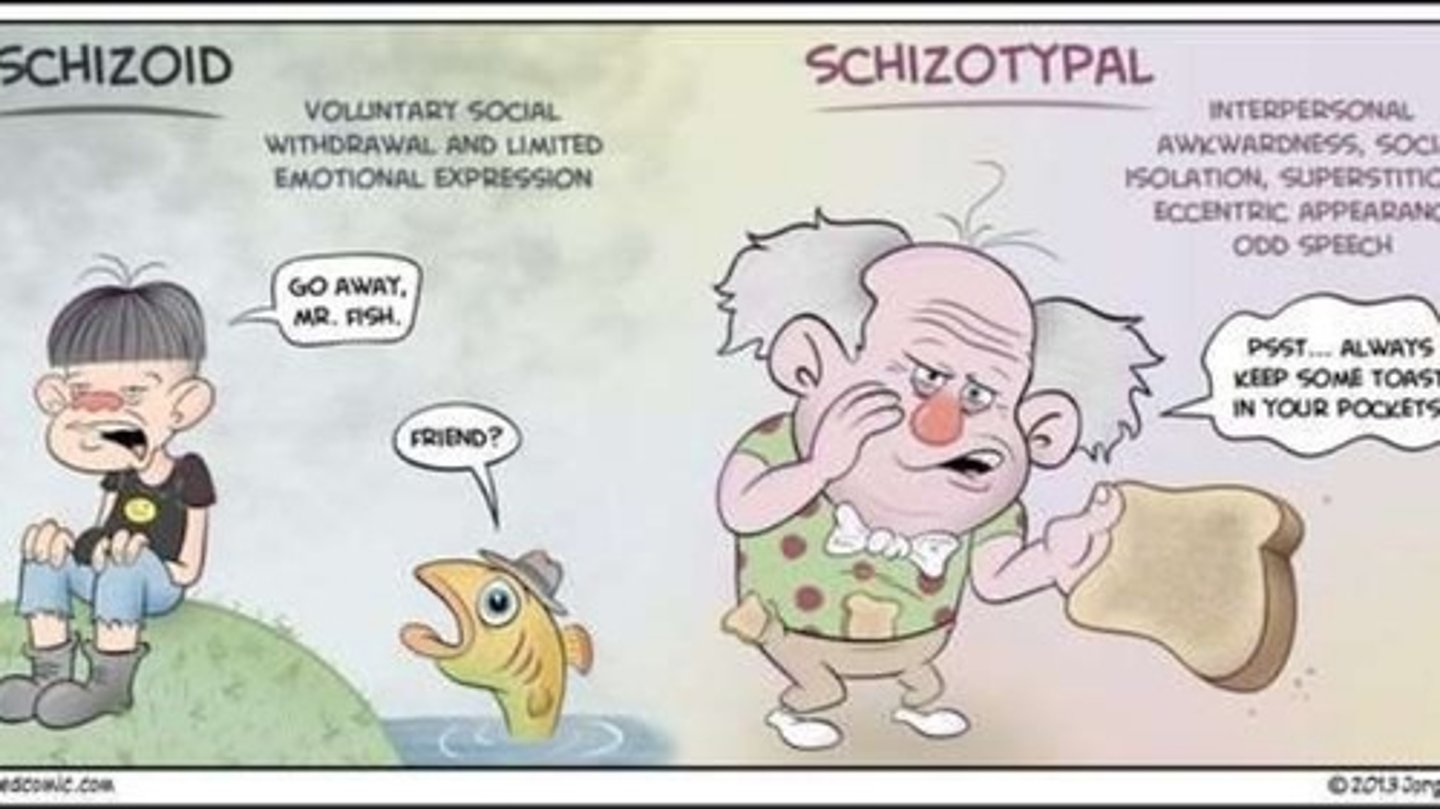
Which of the following is NOT an example of a Cluster B, known as "dramatic," "emotional," and "erratic" mental disorder?
(A) Antisocial
(B) Borderline
(C) Bipolar
(D) Narcisstic
(C) Bipolar
The four Personality Disorders in the dramatic, emotional and erratic cluster are Antisocial, Borderline, Histrionic, and Narcissistic.
Which of the Cluster B (dramatic, emotional and erratic) Personality disorders is characterized by a lack of regard for others, including no remorse?
(A) Histrionic
(B) Borderline
(C) Antisocial
(D) Narcissistic
(C) Antisocial
Antisocial Personality Disorder is characterized by a lack of concern for others, and its sufferers often find themselves in legal issues showing no remorse.
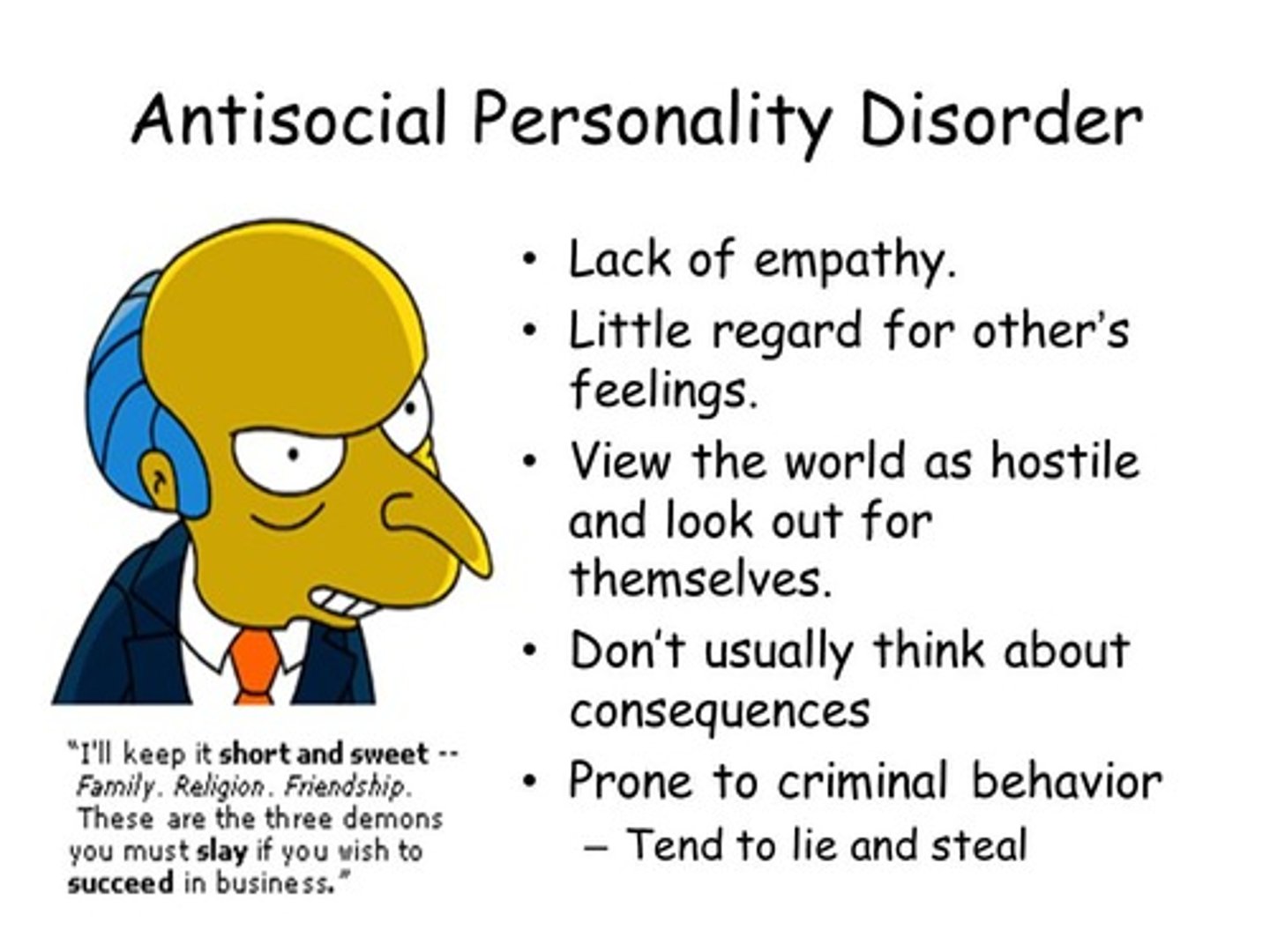
Which of the Cluster B (dramatic, emotional and erratic) Personality disorders is characterized by having very unstable emotions, self-image and relationships, and being very impulsive?
(A) Histrionic
(B) Borderline
(C) Antisocial
(D) Narcissistic
(B) Borderline
Borderline Personality Disorder is characterized by having unstable emotions, self-image and relationships and being very impulsive.
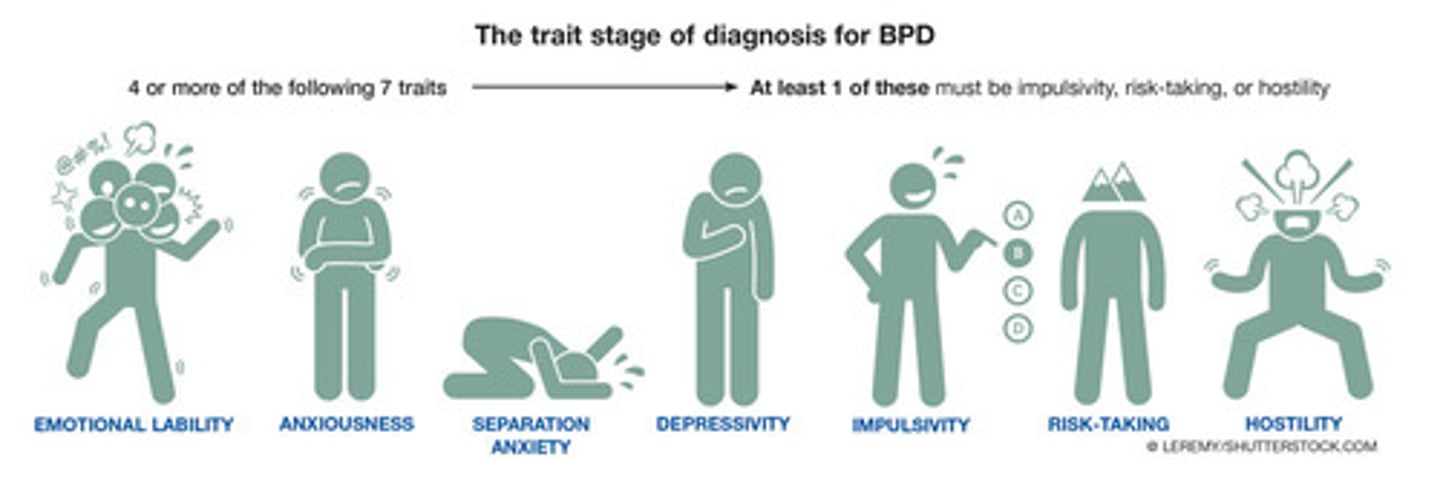
Which of the Cluster B (dramatic, emotional and erratic) Personality disorders is characterized by attention seeking and displaying a lot of outward emotions?
(A) Histrionic
(B) Borderline
(C) Antisocial
(D) Narcissistic
(A) Histrionic
Histrionic Personality Disorder is characterized by attention seeking and displaying a lot of outward emotions.

Which of the Cluster B (dramatic, emotional and erratic) Personality disorders is characterized by having huge egos, a large need for praise, and not handling criticism well?
(A) Histrionic
(B) Borderline
(C) Antisocial
(D) Narcissistic
(D) Narcissistic.
Narcissistic Personality Disorder is characterized by having huge egos, a large need for praise, and not handling criticism well.

CRB Which of the Cluster B disorders is known for using Splitting as a defense mechanism, where they simplistically will view things as "all-good" or "all-bad"?
(A) Histrionic
(B) Borderline
(C) Antisocial
(D) Narcissistic
(B) Borderline
Borderline Personality Disorder uses Splitting as a defense mechanism, where they simplistically will view things as "all-good" or "all-bad".
Which of the following is not an example of a Cluster C, known as "anxious" or "fearful", mental disorder?
(A) Avoidant
(B) Obsessive Compulsive Disorder
(C) Obsessive Compulsive Personality disorder
(D) Dependant
(B) Obsessive Compulsive Disorder
The cluster of anxious and fearful mental disorders contains Avoidant, Obsessive Compulsive Personality, and Dependant Disorders.
Which of the following "anxious" and "fearful" Personality Disorders is characterized by being submissive and clingy?
(A) Avoidant
(B) Obsessive Compulsive Personality
(C) Dependant
(D) None of the above
(C) Dependant
Dependant Personality Disorder is characterized by being submissive and clingy.

Which of the following "anxious" and "fearful" Personality Disorders is characterized by feelings of inhibition and being inadequate?
(A) Avoidant
(B) Obsessive Compulsive Personality
(C) Dependant
(D) None of the above
(A) Avoidant
Avoidant Personality Disorder is characterized by feelings of inhibition and being inadequate, so they avoid social situations.
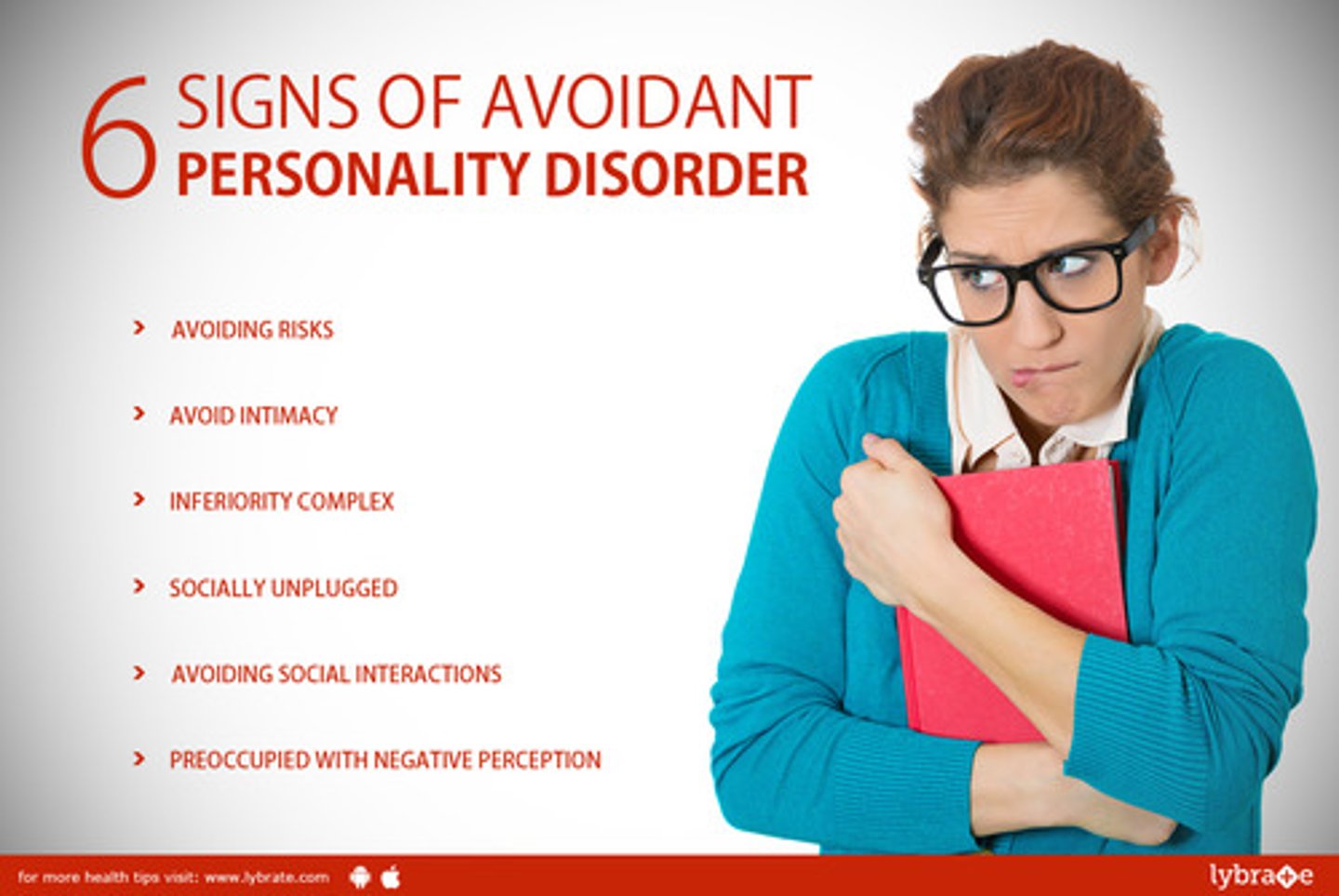
Compare and contrast Obsessive Compulsive Disorder and Obsessive Compulsive Personality Disorder.
Obsessive Compulsive disorder is known for having compulsions on outside tasks or objects.
Obsessive compulsive personality disorder has a focus on their life being completely ordered and controlled, not on some outside object.
Which of the following structures are affected by Parkinson's Disease?
I. Substantia Nigra
II. Dopaminergic Neurons
III. Myelin
(A) I only
(B) II only
(C) I and II only
(D) II and III only
(C) I and II only
The substantia nigra is noticeably less dark in patients with Parkinson's Disease, and the dopaminergic neurons are affected.
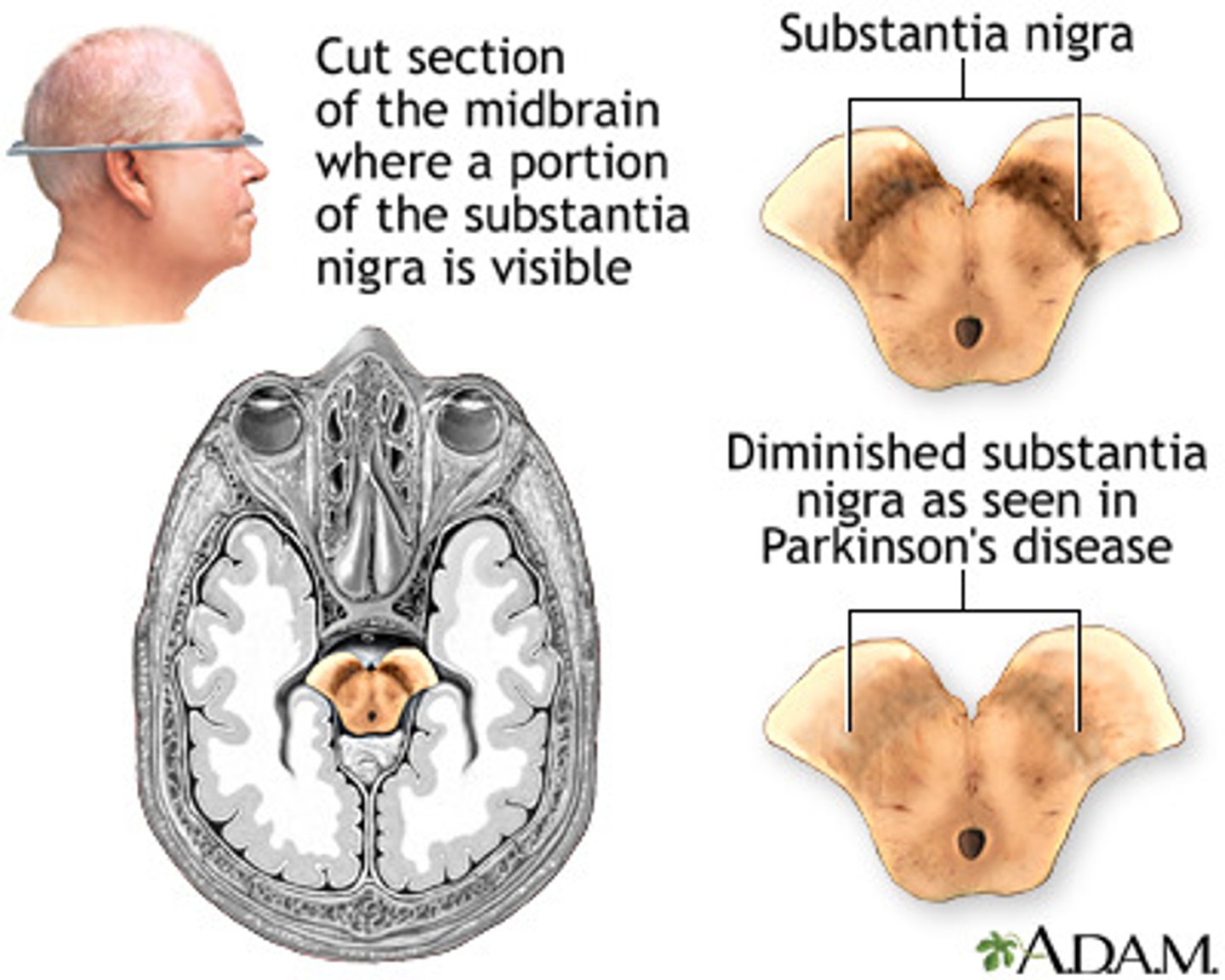
What is the major function of the basal ganglia (which contains the substantia nigra)?
The basal ganglia coordinates motor functions. It receives signals from the cortex, organizes them, and returns them to the cortex in a form to be transmitted to the body.
What is a Lewy Body, and what role does it play in Parkinson's Disease?
Lewy Bodies are found in the substantia nigra in Parkinson's Disease, and mainly contain alpha-synuclein, a normal protein that will aggregate into these bodies and cannot be cleared. These bodies can be distributed amongst the cortex too, and may or may not be what kills the dopaminergic neurons.
CRB Which of the following is NOT a classical symptom of Parkinson's Disease?
(A) Bradykinesia
(B) Resting and Pill-Rolling Tremors
(C) Drunken Gait (wide feet)
(D) Cogwheel rigidity
(C) Drunken Gait (wide feet)
Classical Symptoms of Parkinson's Disease include:
- Bradykinesia
- Resting and Pill-rolling Tremors
- Shuffling Gait and stooped posture
- Cogwheel Rigidity
- Masklike facies (static and expressionless faces)
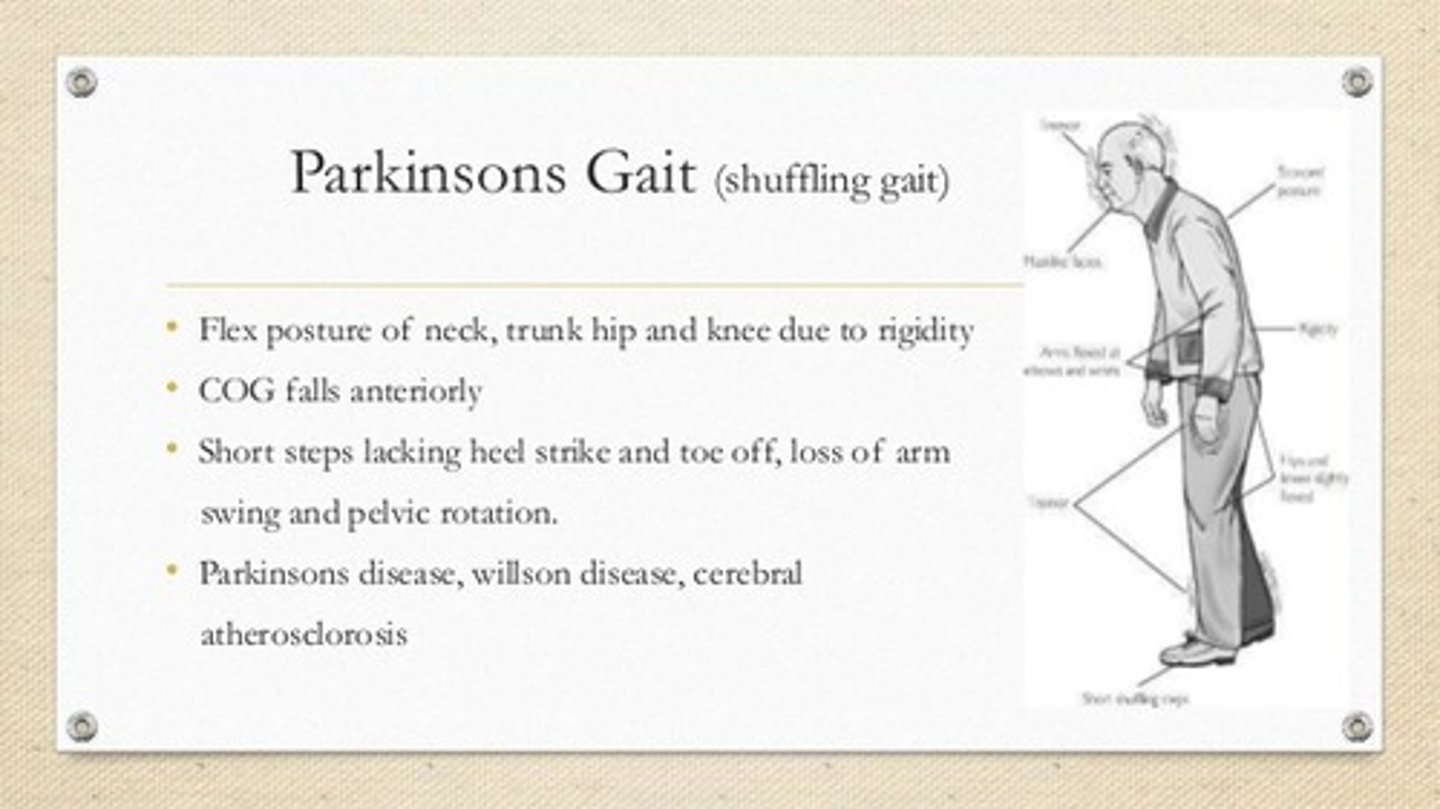
CRB In order to alleviate the effects of Parkinson's Disease, many patients are treated with L-Dopa, a precursor of Dopamine. Which is the Best reason that L-Dopa would be used instead of Dopamine?
(A) L-Dopa is more potent than Dopamine when circulating.
(B) L-Dopa is a smaller molecule and can be more concentrated before administration.
(C) L-Dopa has a longer half-life than Dopamine.
(D) L-Dopa can pass the Blood-Brain Barrier, whereas Dopamine could not.
(D) L-Dopa can pass the Blood-Brain Barrier, whereas Dopamine could not.
Being able to pass the Blood-Brain Barrier is key, because without this, how could the treatment affect the brain??